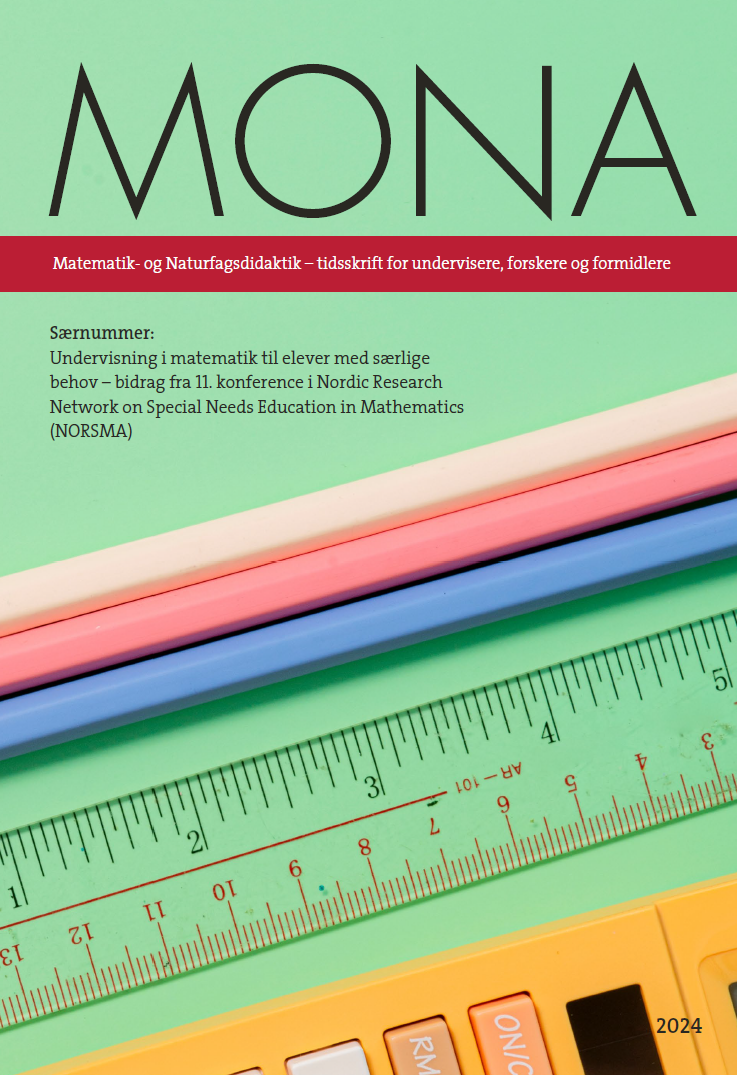Resumé
Are some numbers perceived as more difficult than others, and if so, is this dependent on general mathematical ability? We analysed 689 adults’ (age >18 years) responses to a questionnaire on perceived difficulty of and preference for different numbers’ multiplications. Participants with low self-reported mathematical ability score (MAS) perceived difficult numbers, i.e., numbers including digits 7 and 8, as more difficult than high MAS participants did. This has implications for teaching as well as for research. If a task is perceived as difficult due to the presence of specific digits, this could influence performance and ability to engage in, for example, learning activities.
Referencer
Bandura, A. (1997). Self-efficacy: The Exercise of Control. New York: W. H. Freeman.
Elston, D. M. (2021). Participation bias, self-selection bias, and response bias. Journal of the American Academy of Dermatology. https://doi.org/10.1016/j.jaad.2021.06.025
Feghhi, I., Franchak, J. M., & Rosenbaum, D. A. (2021). Towards a common code for difficulty: Navigating a narrow gap is like memorizing an extra digit. Attention, Perception, & Psychophysics, 83, 3275‑3284.
Khazaal, Y., Van Singer, M., Chatton, A., Achab, S., Zullino, D., Rothen, S., … & Thorens, G. (2014). Does self-selection affect samples’ representativeness in online surveys? An investigation in online video game research. Journal of medical Internet research, 16(7), e2759. https://doi.org/10.2196/jmir.2759
Lindenskov, L. B., & Lindhardt, B. (2023). Vidensopsamling – elever i matematikvanskeligheder. Retrieved (10 March 2024): https://pure.au.dk/portal/da/publications/vidensopsamlingelever-i-matematikvanskeligheder
Major, A. (2017). Numbers with personality. In Proceedings of Bridges 2017: Mathematics, Art, Music, Architecture, Education, Culture (pp. 1‑8).
Mikkelsen, M., Beatrice Schindler Rangvid, B. and Myrup Jensen, V. (2023). Børn og unge i matematikvanskeligheder – En registeranalyse af konsekvenser og kendetegn. VIVE
Pind, P., Bjerre, M., Sunde, P. & Sunde, P. B. (2021). Low performers only recognize straightforward addition word problems. Presentation at NORSMA10
Taraghi, B., Ebner, M., Saranti, A., & Schön, M. (2014). On using markov chain to evidence the learning structures and difficulty levels of one digit multiplication. In Proceedings of the Fourth International Conference on Learning Analytics And Knowledge (pp. 68‑72).
van der Ven, S. H., Straatemeier, M., Jansen, B. R., Klinkenberg, S., & van der Maas, H. L. (2015). Learning multiplication: An integrated analysis of the multiplication ability of primary school children and the difficulty of single digit and multidigit multiplication problems. Learning and Individual Differences, 43, 48‑62. https://doi.org/10.1016/j.lindif.2015.08.013

